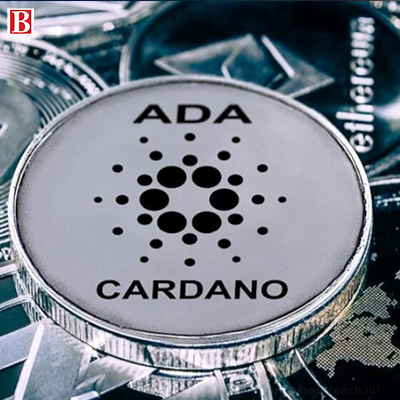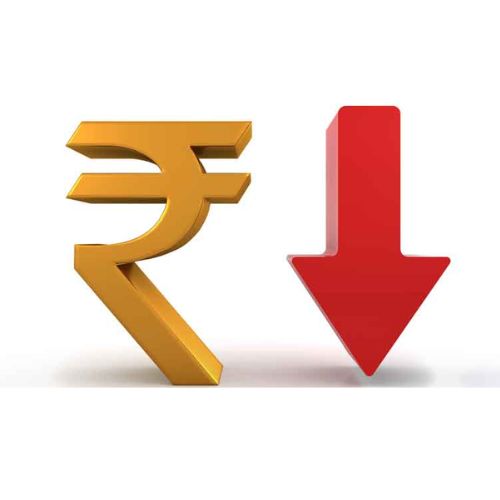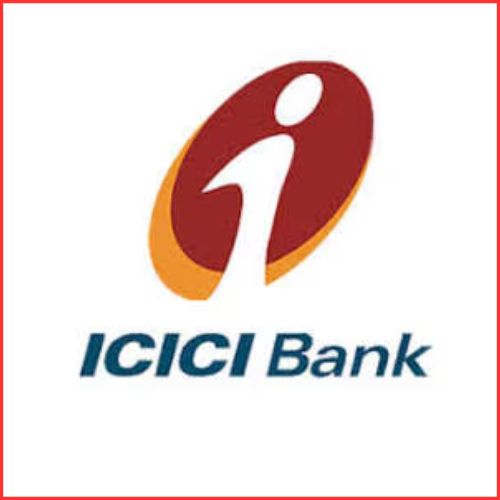Confused about cryptocurrencies, like bitcoin and Ethereum?
You’re not alone. Before you begin your journey in the world of cryptocurrency, know what makes it different from other forms of currency.
A cryptocurrency is a digital or virtual currency that is secured by cryptography, which makes it nearly impossible to counterfeit or double-spend. Many cryptocurrencies are decentralized networks based on blockchain technology—a distributed ledger enforced by a disparate network of computers.
- What is Cryptocurrency?
- Blockchain Technology – the Backbone of Cryptocurrency
- Cryptocurrency and India
- Future of CryptoCurrency in India
- Rise of Crypto Exchanges in India
- Leading Cryptocurrency to Invest
- Benefits Of Cryptocurrency
- Do’s and Don’ts for Cryptocurrency
1. What Is Cryptocurrency?
Cryptocurrency is “virtual currency” at its simplest. A Crypto-coin is like a unique code, similar to the serial number you find on a banknote.
It is a type of digital currency that generally only exists electronically, although you can use services that allow you to convert cryptocurrencies into physical tokens. Cryptocurrency is an innovative concept, which does not have a physical coin or bill and works like any other medium of exchange, for purchasing goods and services online or as assets to be invested in. It can be exchanged with someone online, with a phone, or on a computer.
Before delving further into the world of Cryptocurrencies, first, try and understand what is Blockchain?
2. Understanding blockchain technology
“Blockchain has been shown to have potential applications far beyond bitcoin and cryptocurrency.”
Cryptocurrency is created and managed through the use of advanced encryption techniques known as cryptography. For all cryptocurrencies, Distributed Ledger Technology (DLT) is used as a database to store all the transactions. This list or the records are known as blocks and are connected with the help of cryptography. The database used for storing the entire list of financial transactions (in cryptocurrencies) made through cryptocurrency is available publicly and is known as Blockchain.
A blockchain is a digital ledger of transactions stored publicly that records information in a way that makes it difficult to hack or alter. It grants the safety necessary for individuals to deal directly with each other, without an intermediary like banks, governments, or other third parties. This growing list of records, called blocks, is linked together using cryptography. Every transaction is independently verified by peer-to-peer computer networks, is time-stamped, and gets added to a growing chain of data. Once it has been recorded, the data is non-alterable.
While popularized with the growing use of bitcoin, Ethereum, and other cryptocurrencies, Blockchain technology has shown to have promising applications for legal contracts, property sales, medical records, and other industries that need to authorize and record a series of actions and transactions.
3. Cryptocurrencies and India
“Although Cryptocurrencies have only been around for a little more than a decade, they have been embroiled in controversy and speculation constantly, but ever since it entered the Indian market a little more than 12 years ago, it has steadily been gaining traction.”
To understand the ongoing controversy over cryptocurrency in India, we need to examine the path to getting here.
In the year 2008: A paper titled ‘Bitcoin: A Peer to Peer Electronic Cash System’ was published under the name of Satoshi Nakamoto which is a pseudonymous used by an anonymous developer.
The first purchase using Bitcoin (a type of cryptocurrency) took place in 2010 when a customer swapped 10,000 Bitcoin for two pizzas. This was the first time a cash value was attached to the cryptocurrency.
Around 2011, a host of new cryptocurrencies began emerging in the cryptocurrency market namely Litecoin, Namecoin, and Swiftcoin
- For the first time, Bitcoin becomes involved in a controversy with allegations being made against it, as having been used to pay for guns and drugs on the dark web with fair ease.
Between 2012 and 2017, Cryptocurrencies showed tremendous growth with the price of a Bitcoin shooting up from around $5 at the start of 2012 to almost $1,000 at the end of 2017.
During this period, RBI made two press releases on cryptocurrencies.
- The first press release, dated December 24th, 2013, stated that because Virtual currencies are not backed by any central bank, and their value isn’t underpinned by an asset which makes it purely reliant on its speculation.
- The second, dated February 1st, 2017 repeated these concerns.
In 2016, when Demonetisation happened, it was followed by a boom being observed in the cryptocurrencies market, making the assumption plausible that the crypto boom acted as an unintended consequence of demonetisation.
- This also led to a search for digital alternatives to traditional online banking and made cryptocurrency exchanges an increasingly viable option for tech-savvy people.
Around October 2017, there were two PILs are filed in the Supreme Court which, asking for a complete ban on the buying and selling of cryptocurrencies in India, while the other asked for its regulation
- In November of 2017, the government formed a committee to study issues around virtual currencies and proposals regarding its future going forward.
In December of 2017, the RBI and the Ministry of Finance issued statements on cryptocurrencies
- The ministry compared them to Ponzi schemes. More such statements were released in the following days
On April 6th of 2018, the RBI issued a circular which changed the whole scenario of the crypto market in India, It prevented the commercial and co-operative banks, payments banks, small finance banks, and NBFCs from dealing in virtual currencies and in providing services to all entities in the crypto exchange market, which deal with cryptocurrencies.
- In the days that followed, due to the inability of crypto exchanges in being able to access banking services in India, found their businesses crippled overnight, and trading volumes fell as low as 99%, by august of 2018 95% of all jobs in the crypto industry vanished.
On May 15, 2018, Faced with a severe threat to their existence, several exchanges filed a writ petition in the Supreme Court.
In July of 2019, The committee formed by the government to study the issues around cryptocurrencies submitted its report, recommending a ban on all “private cryptocurrencies” in India.
On the 4th of March 2020, the Supreme Court struck down RBI’s banking ban on crypto, terming the circular issued by the RBI on April 6th, 2018 as being unconstitutional.
- Crypto Exchanges saw a dramatic increase in user interest, subsequently, the price of Bitcoin jumped up by more than 700% between April 2020 and February 2021.
On the 29th of January 2021, The government made an announcement stating that it will introduce a bill to create a sovereign digital currency and simultaneously ban all private cryptocurrencies which led to speculation regarding the recently-revived industry being hit with a second existential threat.
The Statement Reads: “The bill seeks to prohibit all private cryptocurrencies in India. However, it would allow certain exceptions to promote the underlying technology of cryptocurrency and its uses”.
4. Future of CryptoCurrency in India
As India still ponders over the future of Cryptocurrencies in India, Indian investors are left to wait over an official verdict on cryptocurrency exchanges in the country.
India already has a strong base of cryptocurrency investors and exchanges, but investors are still in speculating regarding the future of cryptocurrency.
Apprehensive of a blanket ban, crypto exchanges and investors are fearing an exodus of both talent and business from India, similar to what happened after the RBI’s 2018 ban which saw blockchain experts leaving India and moving to countries where cryptocurrencies were regulated such as Estonia, Switzerland, Singapore and the US.
An outright will be seen as a move that will halt blockchain innovation, which has uses in governance, data economy, and energy.
The Future seems bright?
After the Supreme Court finally ordered the lift of the ban imposed on the Cryptocurrency market by the RBI, the future seems to be bright. The ruling has shown support for the trading of cryptocurrencies like Bitcoin and Ethereum, many cryptocurrencies have been left out and the full-fledged use of the crypto trading may take some time as RBI’s formal notification is still awaited.
Bitcoin in the past year has seen some extremes, from its fall from 8.46 Lakhs in July of 2019 to Rs. 2.7 lakh in March 2019, the prices again recovered, but in December of 2019, it again fell to Rs. 4.69 lakh. After the judgment of the Supreme Court, lifting the ban RBI had imposed, the value of Bitcoin went up to Rs. 6.74 lakh in March 2020.
5. Rise of Crypto Exchanges in India
The high inflation rates in India coupled with the restrictions on investments present a golden opportunity for visionary entrepreneurs to set up cryptocurrency exchanges in India.
Below are the top five crypto exchanges in the country –
1. CoinDCX
CoinDCX is one of the most popular crypto trading platforms in India.
2. WazirX
WazirX is an Indian subsidiary of Binance Holdings, one of the largest cryptocurrency exchanges in the world. It is a very popular
3. CoinSwitch Kuber
CoinSwitch Kuber, which was launched in 2017, lets investors trade with as little as Rs 100.
4. Unocin –
Starting in 2013, way before the crypto-mania gripped the world, Unocin is one of the oldest crypto trading platforms in India. The platform currently has over 1.5 million registered investors
5. Bitbns
Bitbns is a lesser-known crypto platform in India. However, the exchange is said to be one of the best for investors starting their crypto investment journey.
With 24×7 availability, minimal design, and potentially sky-high returns on investment for any individual – crypto exchanges boomed.
6. Leading Cryptocurrency to Invest
Now that we have gone through everything that you need to know and have analyzed the pros and cons of the crypto market, let’s take a look at some of the leading cryptocurrencies that you might want to invest in.
1. Bitcoin – (BTC)

Market Cap – ₹81.7T
Bitcoin the OG Cryptocurrency is a decentralized digital currency. Created in January 2009 by the mysterious Satoshi Nakamoto which was a pseudonym for an anonymous developer, It follows the ideas set out in a whitepaper. The identity of the person or persons who created the technology has remained a mystery to date.
It is operated by a decentralized authority and offers the promise of lower transactions compared to traditional online payment mechanisms. Bitcoin’s price has risen astonishingly from less than $1 to more than $50,000 in just over a decade.
2. Ethereum – (ETH)

Market Cap – ₹33.2T
Ethereum is a decentralized, open-source blockchain platform and has its native cryptocurrency (ETH), It is second only to Bitcoin in terms of Market Cap. Ethereum has experienced tremendous growth in just five years, its price went from about $11 to almost $3,000, increasing more than 27,000%.
Vitalik Buterin who is the Co-founder of Ethereum invented the”Ether (ETH)” Cryptocurrency with work starting in 2013 and going live in 2015. Ethereum not only has its blockchain platform and its cryptocurrency Ether (ETH), it also has its programming language, called Solidity.
3. Cardano – (ADA)

Market Cap – ₹5.5T
Somewhat later to the crypto scene, Cardano (ADA) is a public blockchain platform that is open source and decentralized. It was founded in 2015 by ethereum co-founder Charles Hoskinson. The Project supervision is managed by the Cardano foundation based in Switzerland.
It is notable as being the largest cryptocurrency for having embraced proof-of-stake validation early on. This method expedites transaction time and is seen as a greener alternative by helping reduce its environmental impact by removing the competitive, problem-solving aspect of transaction verification present in platforms like Bitcoin.
4. Tether – (USDT)

Market Cap – ₹5.2T
Blockchain-based cryptocurrency Tether is a stable coin. A Stablecoin is any asset-backed Cryptocurrency, which is held in a designated bank account. Stablecoins track traditional currencies (fiat currencies), like the euro, the dollar or the Japanese yen.
In the case of Tether, its tokens in circulation are backed by an equivalent amount of U.S. dollars
5. Ripple – (XRP)

Market Cap – ₹4T
Ripple was released in 2012 by its Co-founders Chris Larsen and Jed McCaleb. Ripple’s technology acts not only as a cryptocurrency but also as a digital payment network for carrying out financial transactions. Ripple’s main process is a payment settlement asset exchange and remittance system, rather than use blockchain mining, Ripple uses a consensus mechanism, via a group of bank-owned servers, to confirm transactions.
Ripple costs very little in comparison to bitcoin whose transactions not only use more energy but also take longer to confirm, and also charge higher transaction costs. It ranks as one of the top six most valuable blockchain-based cryptocurrencies based on its market capitalization.
6. Polkadot – (DOT)

Market Cap – ₹3.1T
Polkadot was created by Gavin Wood, another member of the core founders of the Ethereum project, where it differs from Ethereum is that rather than creating just decentralized applications on Polkadot, developers have been given the ability to create their blockchain while also using the security that Polkadot’s chain has to offer.
Polkadot’s protocol is designed to enable blockchain networks to operate together seamlessly. It uses a unique proof-of-stake cryptocurrency model which is aimed at establishing interoperability among other blockchains. Polkadot’s protocol is designed to allow systems to work together by allowing permission and permissionless blockchains, as well as oracles to operate together.
7. USD Coin – (USDC)

Market Cap – ₹2.5T
USD Coin (USDC) is the world’s fastest-growing, fully regulated dollar digital stablecoin, It is a type of cryptocurrency that is referred to as a stablecoin which means that it is always asset-backed and in the case of USD Coin, it can always be redeemed as 1 USD Coin for US$1.00, giving it a stable price.
It is a digital stable coin, pegged to the United States dollar and is designed to run on the Ethereum system.
8. Dogecoin – (DOGE)

Market Cap – ₹2.4T
Launched in December 2013 as a joke, Dogecoin’s blockchain still has merit. The underlying technology used in developing Dogecoin was derived from that of Litecoin. Dogecoin has several unique characteristics such as its low price and unlimited supply and also the script algorithm that it utilises. Dogecoin (DOGE) is a P2P, open-source cryptocurrency. Having the image of a Shiba Inu dog as its logo is considered to be an almost sarcastic meme coin.
It has been a hot topic for the past few years thanks to celebrities and billionaires like Elon Musk. There is no limit to the number of Dogecoins that can be created which leaves the currency susceptible to devaluation as its supply increases.
Dogecoin’s price saw a 101,800% increase in its price between 2017 and 2021.
9. Uniswap – (UNI)

Market Cap – ₹1.2T
Built on the Etherum Blockchain, Uniswap is both a decentralised exchange platform (DEX) and also a cryptocurrency. The protocol facilitates automated transactions between cryptocurrency tokens on the Ethereum blockchain through the use of smart contracts where both parties deposit their crypto assets into pools that contain two ETH-based crypto tokens- representing the assets deposited into the pool.
It is also the name of the company that initially built the Uniswap protocol. Uniswap is a way for people to exchange different types of tokens built on the popular Ethereum blockchain, securely, without having to rely on central exchange systems.
10. Litecoin (LTC)

Market Cap – ₹946.2B
Litecoin was launched in October 2011 by former Google and Coinbase engineer Charlie Lee. Initially, it was a direct competitor to Bitcoin in the years that followed its popularity waned due to market saturation. When Charles Lee designed Litecoin, he made a few changes to it. It differs from Bitcoin in a few aspects like an increased total supply, faster block generation speeds and the speed at which new blocks are added to the blockchain. There are approximately only 84 million bitcoins that can ever be created which is quadruple in comparison to the total bitcoin supply. Litecoin also uses Scrypt as a proof of work scheme.
To create Litecoin, Litecoin also creates new blocks every 2.5 minutes, four times faster than Bitcoin. The Litecoin investor and developer communities view the protocol as a complementary pseudo-testnet for Bitcoin and a “digital silver” to Bitcoin’s “digital gold”. The Litecoin foundation stewards the Litecoin project and finances Litecoin Core development.
7. Benefits Of Cryptocurrency
A defining feature of cryptocurrencies is that they are generally not issued by any central authority, rendering them theoretically immune to government interference or manipulation.

1. Control of your assets: The essentially decentralized nature of cryptocurrency trading gives you the control of owning and holding your assets without the intervention of third parties. The value of assets is not determined by the stock exchange or an intermediary, which gives traders the freedom to derive maximum benefit from the prevailing exchange rates.
2. Deflationary Assets: Bitcoin and other cryptocurrencies have a limited supply. This makes them deflationary assets, which means that purchasing power increases over time. Each cryptocurrency has an algorithm that limits its total supply.
3. Transparent and Secure: Cryptocurrencies are popular due to their full transparency, thanks to open source and publicly verifiable technology. ZebPay, founded in 2014, is one of the oldest cryptocurrency exchanges in India. It offers a safe and secure platform for cryptocurrency trading.
4. Good choice for long-term investments: Despite the volatility and fluctuations that characterize the cryptocurrency market, investments are n Cryptocurrencies are considered extremely profitable in the long term. They can be a reasonable source of savings after retirement or give you a much-needed financial reserve during a sudden economic crisis.
5. Flexible and Independent Trading: The 24/7 accessibility of cryptocurrency trading allows traders to organize their trading extremely flexibly at any time of the day. Also, there are several altcoins like Ethereum, Dogecoin, and Ripple which increase earning potential and help traders diversify their portfolios.
8. Do’s and Don’ts for Cryptocurrency
Before investing in crypto trading, follow this checklist of dos and don’ts :
1. First and foremost is to ‘Do your own research (DYOR) to get rid of the enormous misinformation and bias around cryptocurrencies.
2. Gain awareness about the risks associated with crypto due to its volatility. It’s advisable to invest in cryptos according to one’s understanding about the technology behind the assets.
3. Know the role demand plays in the liquidity and stability of a cryptocurrency. The higher the demand and the community backing, the more lucrative is cryptocurrency for the investors.
4. Get an understanding of the crypto regulations and ensure that service providers comply with Indian laws. Crypto has a fundamentally different approach to being a digital asset and the regulations keep evolving globally.
Analyze the coin’s supply limit before investing. For example, Bitcoin is capped at 21 million coins.
5. Read up extensively on any particular type of cryptocurrency you are interested in buying. Bitcoin is the oldest among all. Apart from Bitcoin, there are several popular currencies being traded on ZebPay. Each currency has its own liquidity which impacts its price volatility.
Similar
Future of CryptoCurrency in India
Top 5 Best Coins To Invest For Future
Top 10 Best Crypto Wallets in India
Top 10 Cryptocurrency to Invest in India














